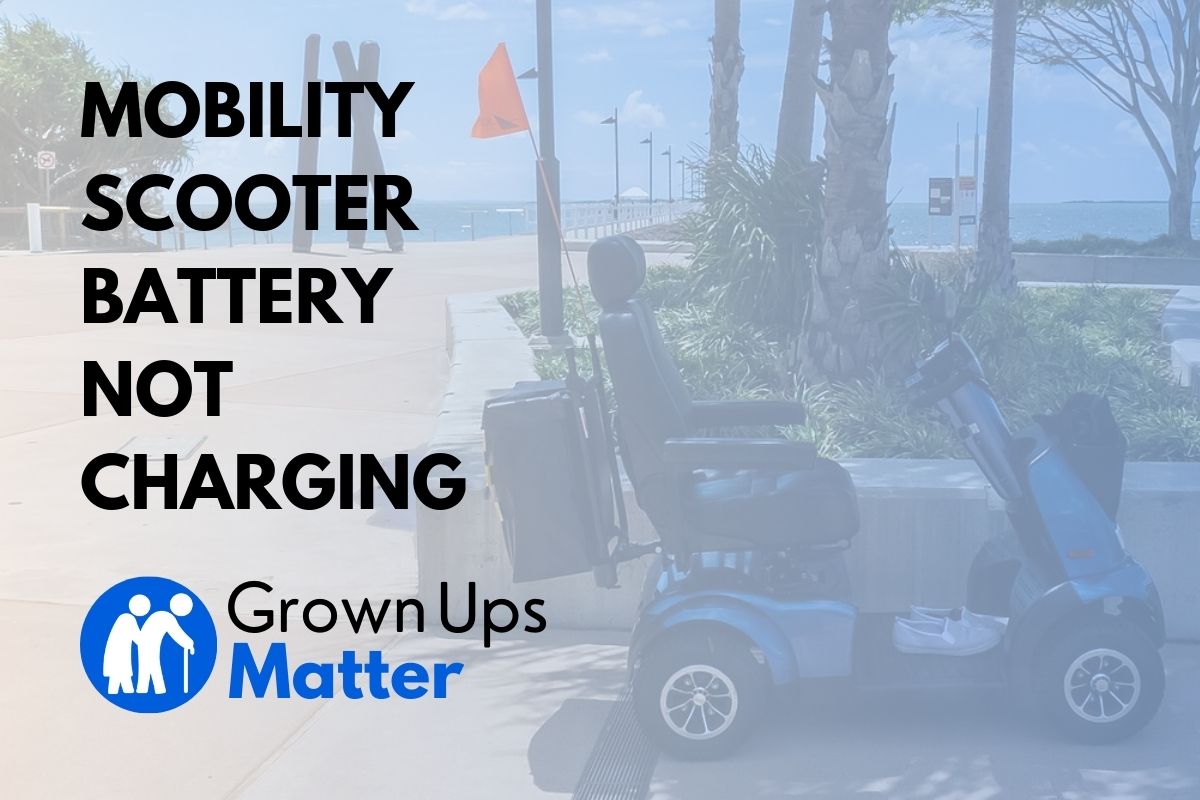Mobility scooters are a lifesaver for many people who have mobility issues.
They provide independence and freedom for those who might otherwise have difficulty with walking long distances or standing for a long period of time.
However, like all machines, mobility scooters can break down and stop working properly.
One common problem that many scooter users face is that their scooter is not charging.
In this article, we will discuss how to fix a mobility scooter that is not charging.
We will start by explaining the common causes of this problem, such as a dead battery or a faulty charger.
We will then provide step-by-step instructions on how to diagnose and fix these issues.
We will also discuss how to maintain your scooter to prevent this problem from happening again in the future.
We understand that the thought of fixing a mobility scooter can be daunting, especially if you are not familiar with the mechanics of the device.
That’s why we have made sure to make this guide as simple and easy to understand as possible.
We will break down complex concepts into easy-to-understand advice.
And, most importantly, we will provide actionable and practical takeaways that you can use to fix your scooter. So, if your scooter is not charging, don’t panic.
Just read this article and follow the instructions.
Key Takeaways:
- Common causes of a mobility scooter not charging include a dead battery, faulty charger, malfunctioning charging port, faulty charger wiring, and a worn out or over-discharged battery.
- The recommended fixes for these issues include the replacement of the charging port, charger, charger wires, and battery, with estimated repair costs ranging from $25 to $350.
- Proper maintenance and care, especially during charging cycles are essential to prevent this issue from happening again in the future.
Common Causes and Fixes
Charging Port
The charging port of your scooter is the female plug into which you insert the charger cable.
Sometimes, and especially with use, this part can malfunction and stop taking and passing current to the battery.
Recommended Fix:
Charging port replacement.
Average Repair Cost: $75
Charger
The charger, usually comprised of a power supply and a cable is the nexus between the wall socket and the scooter’s battery.
It’s not unheard of for these units to fail, and stop working properly, although not common.
In some cases, the charger could stop passing current altogether.
Recommended Fix:
Charger replacement.
Average Repair Cost: $100
Charger Wire
Another more common failure point with chargers is their wiring.
You see, especially when forced into an unnatural angle for long periods of time, cables can break and start generating intermittent false contact that prevents the energy from flowing.
This is usually common near the ports at the ends.
Depending on which end of the cable your problem lies you might be required to get a new charger altogether.
Recommended Fix:
Replace charger wires.
Average Repair Cost: $25
Battery
Worn out, over-discharged
The most common issues with batteries not taking charge are being heavily worn out, or being over-discharged.
Worn-out batteries, due to extensive usage or over-charging, charge faster, but the cycle ends at a lower capacity, making them run for less time.
Over-discharged batteries can happen when the vehicle is pushed to work on very low charges for extended periods.
In some rare occasions, the battery can fall into a charge state lower than that intended for their correct usage, and not be able to even take further charging.
Recommended Fix:
Battery replacement.
Average Repair Cost: $350
Alternatives to Repair Your Scooter
Sometimes these common issues, as simple as they seem can get out of hand for the average user.
To assist you with this, we have created the following article detailing all the different options you should consider for repairing your scooter:
How to Prevent This Issue in the Future
Mobility scooters are an important tool for those who need help getting around, and it’s essential to maintain them to keep them functioning well.
Proper maintenance is essential to keep your mobility scooter running smoothly and safely.
Doing it regularly can prevent problems and keep you on the move, giving you the freedom and independence you need to live your life.
So, if you want to make the most of your mobility scooter, be sure to take good care of it.
We have written the following guide to help you with it:
All the claims made in this article are only for informational purposes, based on the writer’s experience and not clinical advice. You should always consult your physician or physical therapist if you have any doubts about how this applies to your specific case.

Rami is an economist with a passion for personal finance and a desire to help people make the most of their retirement years. He’s also the tech mind that made all of this possible, and a marketing enthusiast. In his articles, Ramiro offers real-life advice and resources for seniors looking to manage their finances and make the most of their retirement savings. He is dedicated to helping his readers live comfortably and securely during their golden years.

